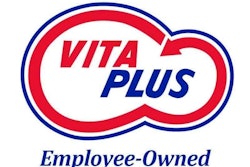
As the season of fall harvest planning is upon us, let us take a moment to review the idea, and the reality, of the importance of having agrain flow plan. We even have some simple and timeless quotes reminding us of the reality of plans.
“If you fail to plan, you are planning to fail.” – Benjamin Franklin
“No plan survives contact with the enemy.” – Field Marshall von Moltke
“Everybody has a plan until they get hit for the first time.” – Mike Tyson
Perhaps for the grain elevator, we can produce our own memorable one-liner:
“No grain flow plan survives first contact with harvest.”
What if we take another step back and start the season WITHOUT a grain flow plan? What is the worst that could happen to thebasis trader’s ability to merchandise grain? Let us look at a few of the issues that come to mind for the seasoned merchant and how the practice of planning can help mitigate them.
Paid too much for grain
Not in terms of the cash price, mind you (hey, we’re happy when farmers can sell at or near record high price levels) but in terms of the buy basis. Paying too much for grain usually happens in one of two ways. First, when bidding what seemed like a good conservative basis level for forward contracts months in advance ends up becoming less so by the time those bushels get delivered (looking at you, freight and spreads). Second, when not taking advantage of the time of high futures levels and letting the board do the heavy lifting for the cash price.
If you buy grain, you will likely be paying higher freight and interest costs this year, and your buy basis is the only thing you can control to cover those added costs. Know which bushels to chase and which to let go down the road.
Failed to lock in favorable spreads
If there was a year wherein a “good” spread was completely subjective, this was it. While we all would hope to take advantage of carry spreads that pay at least 100% interest cost, sometimes they simply aren’t available: so, then what?
First off, redefine what constitutes a “good” spread if you’ve made a deferred sale, and lock in the current spread. After all, you used that spread in figuring the margin before making the sale in the first place. Don’t fall into the trap of thinking the spread “has” to do anything.
为pre-spreading提前收获,drop-dead date set for locking in carry spreads if your targets haven’t been hit by then. Don’t allow a few cents to jeopardize your ability to merchandise profitably.
For post-harvest, don’t hesitate to lock in forward spreads as soon as you know you’ll need them. Waiting until roll day in this market environment isn’t a risk worth taking.
Didn’t sell enough bushels early on
If there is a common refrain across the grain industry regarding basis, it is “I didn’t sell enough!” The last couple of crop years has highlighted the necessity of knowing your margin goals and being decisive once they are attainable. The most important aspect of working out a pre-harvest grain flow plan, next to knowing how much grain you intend to handle, is knowing at what margin goal the grain will be sold.
Developing a working understanding of your regional basis movement allows you to make informed decisions on selling, this understanding developed through a simple study of your basis history. Likewise, developing a reliable history of how much grain you’ll be moving (and when) will give you the confidence needed to make a good sale and sell a proper amount. Remember, the hardest thing to do in a flat or inverted market is to stay short of basis, especially at profitable levels.
When judging whether or not to sell a particular basis value, the temptation is to ask, “if it’s gotten this high, how much higher can it go?” The more important question is, “what margin will selling this value give me, and how does it work with my anticipated grain flow?”
View selling basis values as a zone instead of a specific number. Always remember that just because you may have paid too high a basis for the grain doesn’t mean the sell basis has to (or even can) make up for the lost margin opportunity.
Customer defaults on their contract
While present each crop year, counterparty risk tends to be more profound and potentially more devastating during years with higher price volatility and flat/inverted spread levels. While you cannot control someone defaulting on a contract, you can take steps to help manage this risk.
First and foremost is having meaningful and regular communication with your buyers and sellers. Get to know your customers’ operations and what’s going on in your trade area. While this seems like a no-brainer, many merchants are caught off guard when a producer shows up at harvest empty-handed and unable to make good on the contract.
As soon as you know there is a potential problem with contract fulfillment, act immediately. Be familiar with the mechanics of contract cancellation and rolling (both to another delivery period and another commodity) and be prepared to have a potentially tough conversation with that producer. Ignoring these types of problems can only make them worse.
While it may be tougher to discern if/when your buyer defaults on a sales contract, the same preparedness applies, know what the options are for dealing with such a default, have a good grasp on replacement values, and understand what the NGFA trade rules have to say about remediation for such situations.
Going into such a scenario with an idea of Plan A, B and even C may not solve the issue. Still, it will at least give you the confidence needed to be decisive when that moment arrives.
Ran out of money
Perhaps the most important of all our worst-case scenarios, but funds running out is certainly not the most difficult to manage. Many times, issues with lenders financing grain elevators can come down to a simple matter of communication and understanding.
When markets are calm and supplies are ample, you may not feel the need to talk to your lender more than a few times all year or for them to communicate with you. However, when the cost of forward contracting, maintaining hedges and carrying company-owned inventory goes up, so should the quality of conversations you’re having with your lender.
Grain flow-based cash flow projections become not just necessary but vital in allowing you as a merchandiser to do what the market is telling you to do. Likewise, your lender having a good idea of what your credit needs could be during a sustained rally while carrying high-priced inventory amid difficult logistic conditions, all the while continuing to forward contract more grain, is paramount to minimizing any surprises during the marketing year.
It goes without saying that having these conversations before such situations arise is always a good business practice.
Dwight Eisenhower may never have been a grain merchandiser. Still, his timeless quote certainly applies here: “Plans are worthless, but planning is everything.”
知道你的最糟糕的情况是好的,但知道ng how to mitigate your worst-case scenario is even better. Take precautions against the worst that could happen and open your merchandising up for the best that could happen.






















